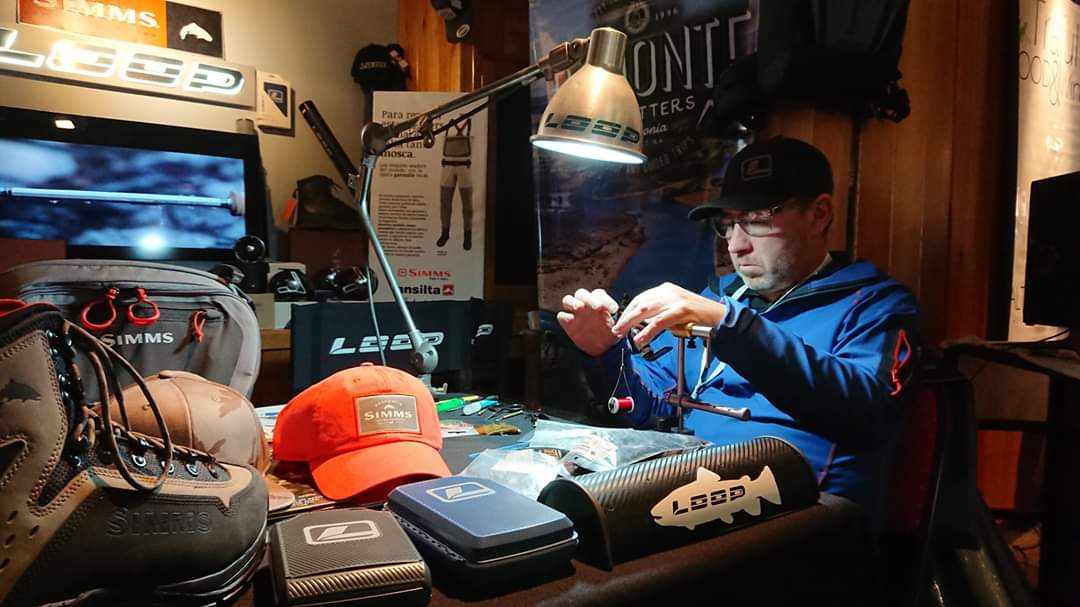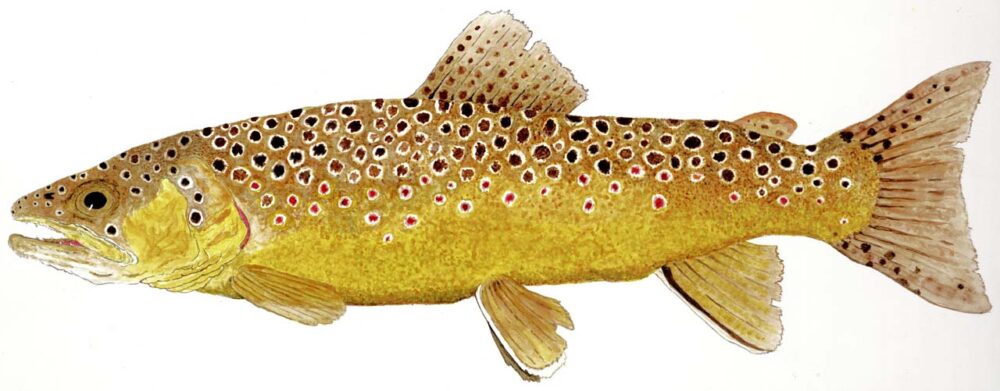
Ruben Martin, one of the world’s most accomplished and innovative fly tyers, will be producing weekly videos on how to tie small, classic trout flies on tubes. Also, we’ll be examining the Micro Tubes – #16 to #22.
In the 1970s, tandem flies gave way to attractor patterns, the most famous of which was probably the Zonker

Skip Clement in New Zealand for five months and fished every day – about 150 days. Largest fish Yellowtail kingfish [also known as haku, kingi or yellowtail] 93-pounds. Largest trout, Salmo trutta, 13-pounds.
By Skip Clement
The predator fly and attractor fly patterns have no family. But they are related to each other like orphans would be; they are all very different.
No John Doe is tied to the first predator pattern, and a Jane Doe is not associated with the first attractor pattern.
The earliest known precursor to predator or attractor as a name in fly tying was most likely advanced when tandem flies hit the fly shop trays and gained favor with reports claiming big trout ‘come-a-running.’
Initially, attractor flies were clumps of feathers meant to get a bite on nearby nymph
Any fly can be a so-called attractor or predator fly. It can be tied to target anything from the lifecycle stage of a Stonefly to a 9-inch ballyhoo trailed behind a crewed yacht to catch billfish or a baitfish pattern of any shape, size, color, or built to swim in a particular water column.
The predator/attractor fly pattern tied on a 4/0 hook or larger makes a finished fly very heavy and hard to cast. For some folks, casting large, heavy flies can be challenging.
The subject fly size can create an issue with any hook-tied fly, but the same size fly tied on a tube could use any size or type of hook – smaller, almost always producing considerable advantages.

Ruben Martin’s Zonker.
Zonkers do it all
Barry Ord wrote that American fly tyer Dan Byford created the original Zonker in the 1970s. It quickly gained worldwide recognition as a big fish fly that, while easily tied, did an excellent job of imitating most smaller baitfish.
Ord wrote: “A great advantage of the Zonker is that, unlike bucktail and feather-wing streamers, it is an extremely robust pattern. If tied correctly, the fly usually outlives the hook, although the eyes (if used) and Mylar tubing are somewhat vulnerable to sharp teeth. Protecting the vulnerability of the fly getting destroyed can be lessened by coating the eyes and Mylar body with UV resin.”
Choosing a tube fly can dramatically lessen any fly from getting chewed up because rigging a tube fly allows it to detach by riding up the leader and out of harm’s way.
Add something with a little flash to help trigger a bite on the big fly or its mate; the second fly, a nymph, dropped off the big fly.
When changing flies, staying with the pattern is always a good idea. Sometimes, a #10 size fly gets looked at, but no bites. Switching to a #14 fly could do the trick.

Thom Glace‘s Salmo trutta, one of the most popular of his illustrations is the brown trout. International Game Fish Association [IGFA] World Record on a fly is 36 lbs 6-Ounces, Obervellach MOll River, Austria 2007.
Having the option of smaller hooks with tube flies can be a game changer; it has been for me
Here is Ruben Martin’s Zonker tied as a tube fly. Zonker tube bait flies tying instructions for fly fishing, spinning, and baitcasting.
Recipe:
Tube: Flexitube PROTUBE
Thread: UNI 8/0 o 6/0
Wing: zonker strips
Weight: alambre de plomo, grueso [lead wire, thick].
Body: flexi braid tubing.
Eyes: Epoxy 3D
Head: .poxipol [two-part epoxy adhesive].
Contact:


